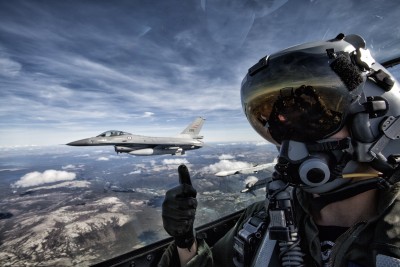Norway’s foreign ministry has confirmed that it complained to Russian authorities following three of their air force training missions last year that simulated attacks on Norwegian military stations. Norwegian officials claimed that “this type of behaviour” was not in line with good relations between neighbours.

Newspaper Aftenposten reported Wednesday that Russian bomber jets, for example, flew directly towards Norway’s military intelligence agency’s radar station at Vardø in the northernmost county of Finnmark. A total of nine Russian aircraft took part in the exercise on March 24, 2017.
It caught the Norwegian defense department’s operative headquarters by surprise, and NATO’s “Quick Reaction Alert” base at Bodø sent out Norwegian fighter jets to respond. After years of experiencing Russian fighter jets buzzing the Norwegian coastline, it’s become routine for F16s to be launched to meet the Russian jets and identify them.
This time, however, there were so many Russian aircraft, with a second wave also coming on March 24, that the Norwegians were unable to identify all of them. “We were in the area, but didn’t manage to identify all the aircraft we wanted to,” Lt Col Ivar Moen, spokesman at the base in Bodø, told Aftenposten.
He noted that the incident took place in international airspace and Norway’s border was not violated, “but the way in which they (the Russians) operated was different, and we didn’t do the job we wanted to.”

In addition to the two waves of Russian bombers heading for Vardø on March 24, and eventually returning to their bases on Russia’s nearby Kola Peninsula, NATO vessels taking part in an exercise at sea northwest of Senja in Troms County were the target of another Russian “attack” on May 22 last year. It also involved simulated bomber attacks on NATO forces including Norwegian vessels. A total of 12 Russian aircraft took part in that exercise, according to the military intelligence service E-tjenesten.
Five days later, on May 27, a third “attack” was simulated by Russian forces against various installations around Bodø. “That occurred in connection with an allied air force exercise that Norway lead in cooperation with Sweden and Finland,” Norway’s defense chief, Morten Haga Lunde, told Aftenposten.
E-tjenesten also reported that a new Russian missile system known as Iskander was moved to Petsjengadalen, less than 40 kilometers from the Norwegian-Russian border crossing at Storskog, just east of Kirkenes. Iskander has a range of around 500 kilometers, putting most of Northern Norway within its potential target area.
Norwegian military officials have viewed the missile placement system as part of a perceived need by Russian authorities to demonstrate their military strength. Russia has also complained about Norwegian and NATO activity in the northern areas.
Now Norway is complaining as well. Kristin Enstad of the foreign ministry in Oslo confirmed to Aftenposten that “the issue has been taken up in an appropriate manner with the Russian authorities. It’s been made clear that we don’t see this type of behaviour as promoting good neighbourly relations. On the contrary, it contributes towards a decline in confidence, predictability and stability in the north.”
newsinenglish.no/Nina Berglund

